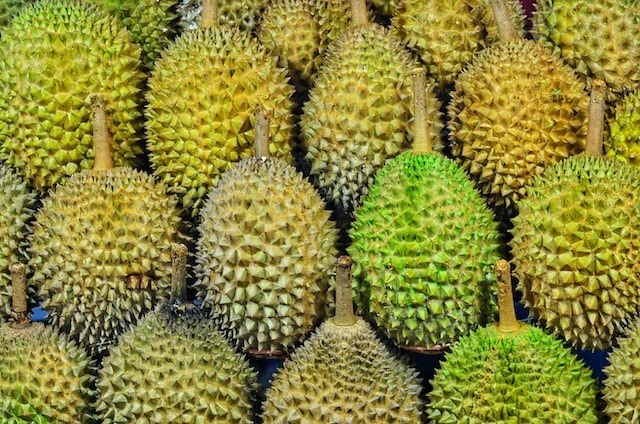W51 Durian Update: Stable Vietnamese Durian Prices, Japanese Authorities Reject Two Shipments of Vietnamese Durians, and Thailand Considers Durian Fund Bill

Vietnamese Durian Prices and Demand Remained Stable on December 21, 2023
Domestic durian prices in Vietnam are currently stable, with the highest price of beautiful Thai durian at USD 6.16 per kilogram (VND 150,000/kg). Durian prices vary by region, with Ri6 durian and Thai durian prices reaching USD 4.52 to 7.39/kg (VND 110,000 to 180,000/kg). Farmers harvest off-season durian trees at high prices, earning over USD 2.46/kg (VND 60,000/kg). Vietnam's fruit and vegetable exports are expected to reach USD 5.5 to 5.6 billion in 2023, with China being the leading import market. The Vietnamese durian demand in China is significant and growing steadily. However, the market remains small in relation to the population. Thai durians must focus on quality and classification to dominate the Chinese market. The Chinese people love sweet fruits, and after Vietnamese durians entered the Chinese market, the price of Thai durians increased. Vietnamese durian farmers should choose fruits close to ripeness to improve taste, classification, quality control, and standardization, making the durian more delicious and popular with consumers.
Japanese Authorities Reject Vietnamese Durians and Peppers, Urging Strict Adherence to Standards
Vietnamese agricultural exporters are facing a critical challenge following Japanese authorities' rejection of two shipments of Vietnamese durians and peppers. This underscores the importance of adhering to stringent standards for cleanliness and environmental practices in importing markets. The Vietnamese Embassy's Trade Counselor in Japan emphasizes that agricultural export businesses must fully comply with Japanese standards, focusing on product quality to avoid violations. With the European Union (EU) and China issuing notifications related to Sanitary and Phytosanitary Measures (SPS), there is a growing urgency for the industry to stay vigilant and adapt to changing market dynamics.
Vietnam Import High Priced Thai Kadum Durian Due to Domestic Scarcity and High Demand During Dec-23
Kadum durian, a popular domestic product in Thailand, is being imported into Vietnam due to the decreasing demand and scarcity of Vietnam's durian season. The Kadum durian, weighing 2 to 4 kg, is sold for USD 10.26 to 13.55/kg (VND 250,000 to 330,000/kg), 50% higher than Vietnamese products. Fruit stores in Hanoi and Ho Chi Minh City can only import 300 to 500 kg daily and sell out in 2 to 4 days. Due to supply scarcity and high demand, the price has increased by 15% year-over-year (YoY). Wholesale markets in Ho Chi Minh City do not import this product due to the small volumes and high prices.
Thailand Contemplates 'Thailand Durian Fund Bill' to Support Sustainable Cultivation and Tax Exporters
Moreover, Thailand is considering the introduction of the "Thailand Durian Fund Bill," which is aimed at collecting taxes and fees from exporters to support the sustainable development of durian cultivation. Since durian exports from Thailand have exceeded rice and rubber, the proposed durian export tax is set at USD 0.0072/kg (THB 0.25/kg). The Thai Durian Fund, expected to generate approximately USD 10.9 million (THB 375 million) in annual tax revenue, aims to allocate funds for research and development, quality control, compensation for farmers affected by natural disasters, and administrative expenses. The proposed law includes penalties for tax evasion and obstruction and outlines 25 articles governing the fund's operations, with the establishment of a committee for fund management.
Thai Durian Prices Increased by 19.32% MoM in Early Dec-23
From December 1 to 15, 2023, the average price of Thai durian stood at approximately USD 7.78/kg , an increase of 19.32% month-on-month (MoM), compared to the Nov-23 price of USD 6.52/kg. The observed price surge could be due to the imminent end of the Thai durian season in the Southern region of Thailand, leading to a limited supply of crops.


